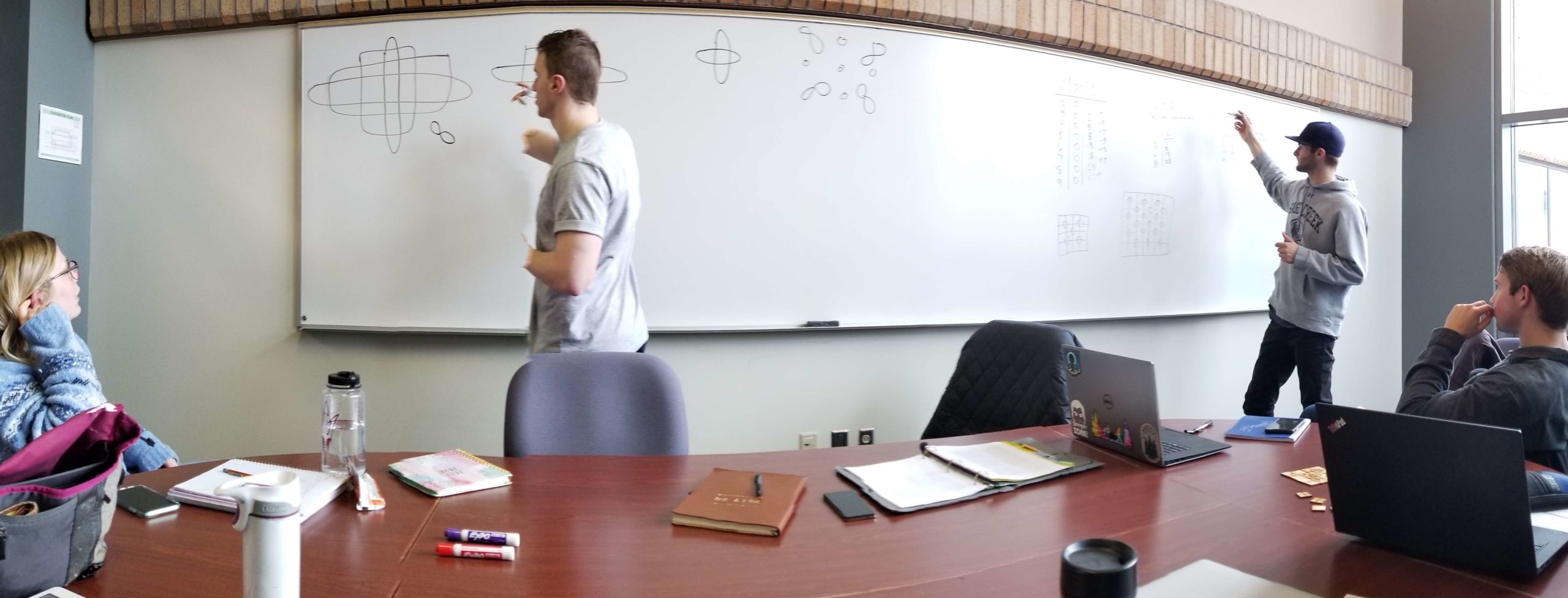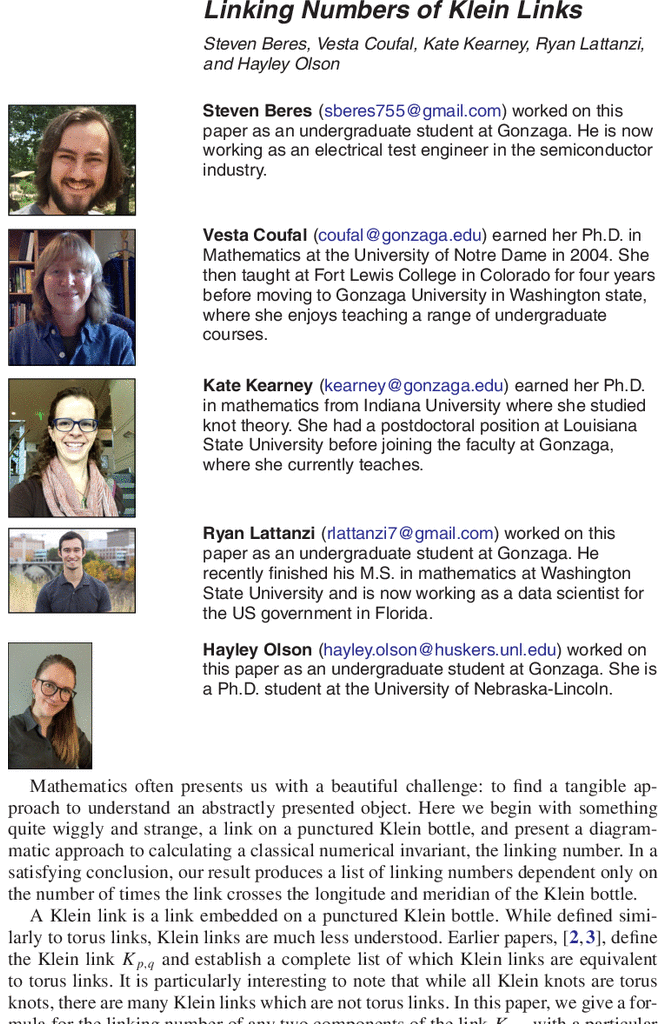There is a lot of advice out there about how to start an undergraduate research (UR) project. Most of it begins with having a good question. They say that a good question is key to a good project. The problem for me was…I didn’t have a question to start with. I tried to come up with one, even a bad one, from my own research and failed; I could not find a way to reformulate something to make it accessible to an undergraduate. And yet, for many reasons, I really needed, and wanted, to work with undergraduates on research. I even tried looking at topics different from my own research, but this left me uncomfortable; I didn’t know the background well enough and I wasn’t excited by the project.
As I kept trying, I eventually realized that I was only making myself frustrated. As things were getting worse, not better, I managed to stop and rethink what I was doing. I asked myself: Why do UR? Why do math? The answer for me is: I like learning new things, exploring ideas, and working out solutions; I like being a student and playing with math problems. With that in mind, I decided to set aside the grand idea of UR and concentrate on what I had always loved: doing math and learning!
For a number of reasons, I chose to learn about knot theory. As a topologist, it’s both in my field of study and of interest to me. At its most basic, knot theory is accessible to undergraduates… and it looked fun! So, I asked for suggestions of a good introductory book for undergraduates. Once I had a book, I recruited five students to do a reading course in the summer; we met once a week for an hour. In preparation for each meeting we would read the next section and attempt the exercises. During our meeting we’d discuss any questions and either present or work together on the exercises. We had a lot of fun! With no expectations for outcomes, we were able to simply enjoy learning new stuff and playing with ideas. I was comfortable with my role as student/leader and happy not being the expert. This was exactly what I needed for my own enjoyment of mathematics!
In the back of my mind, I still wanted to grow this into an UR project. I was intentional about educating myself on the topic: I attended talks, courses, workshops, and conferences about knot theory; I sought out and talked with people in the field; I taught both independent study and intro courses on the topic. Most importantly, I continued reading and playing with knot theory ideas alongside students.

My work with students gradually evolved from reading, to exploring on our own, to a research project. Twelve years after I first started reading a knot theory book with students, we have published three papers and have submitted a fourth. Twenty-four students have worked with me during that time, some for just one semester, others for up to four years. I’ve even been able to provide some monetary support to students through small grants. The students have given numerous talks at conferences, even at the national level. Three of them have won undergraduate talk awards. Some of the students participated in REU’s, and several went on to graduate school. Three other mathematics faculty have joined the project, including a knot theorist. An impressive record for my department and school!
If you find yourself struggling to get started with an UR project, my suggestion is to stop struggling. Take some time to reflect on what it is that you love about doing math.
Then find a way to do what you love and do that with students. If you are like me, and what you really love is learning something new, then I urge you to try what I did: take away the pressure to produce, and just enjoy learning. Give it time and be patient. Doing work you enjoy and letting it progress naturally will lead to a successful project.
Vesta Coufal teaches at Gonzaga University, a liberal arts institution in northeastern Washington state with about 5,000 undergraduates. The mathematics department has grown from graduating about 16 mathematics majors per year when she started this project, to now graduating approximately 25. The teaching load is roughly three-three, so faculty do not have a lot of free time during the school year for research. Undergraduate research was not common in the math department, and there were some skeptics when Dr. Coufal started, but it is now widespread, accepted, and encouraged. Dr. Coufal views both her project and the changes at her school as success.





